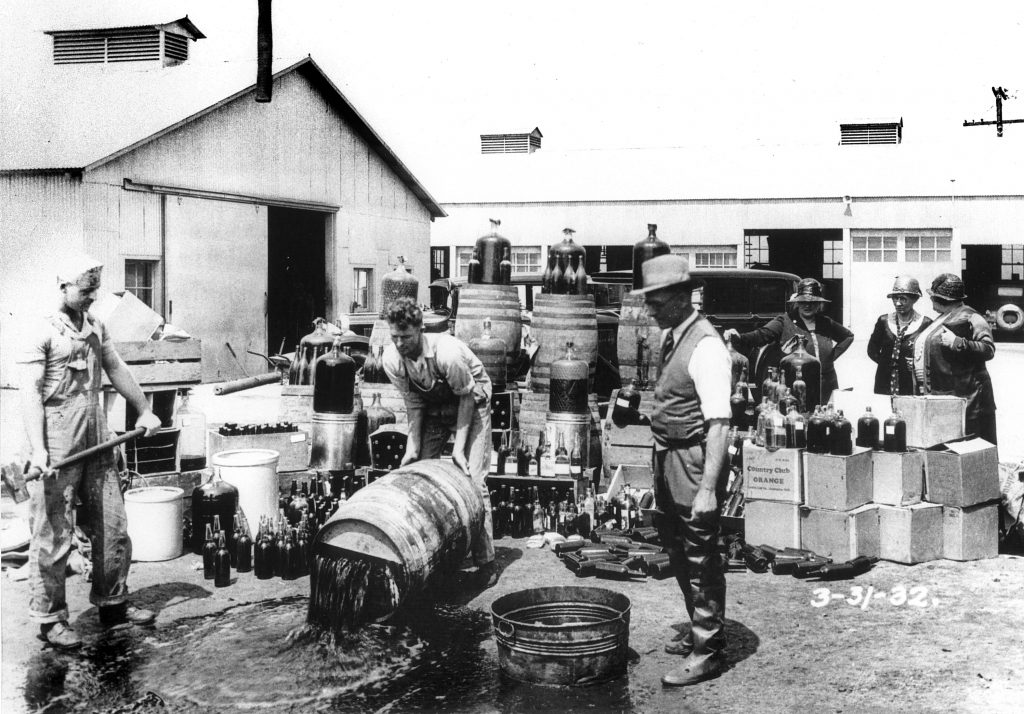
Does CBD Treat Depression?
Cannabidiol – often abbreviated as CBD – is a truly remarkable, powerful molecule of the cannabis plant that has dozens of potential health benefits in

Cannabis has remained a Schedule 1 narcotic under federal law – a categorization for the most dangerous drugs (shared with heroin and MDMA aka ecstasy) that “have no currently accepted medical use in the United States, a lack of accepted safety for use under medical supervision, and a high potential for abuse” – since Richard Nixon signed the 1970 Controlled Substances Act (CSA).
As decades of scientific inquiry have now demonstrated, cannabis has multiple potential medical applications (many of them potentially lifesaving), is impossible to overdose on, and, in fact, has an extensively vetted safety profile.
Nonetheless, the science has not prevented federal administration after administration (and also many state and local law enforcement bodies) from targeting cannabis growers and users in the long-running “War on Drugs.”
As we will explore later on, one of the ostensible reasons for waging this failed “war” on cannabis (and other drugs) – which wastes $51 billion in taxpayer dollars annually and results in millions of Americans locked up for non-violent drug offenses – has been protecting children from its potential harms. The evidence, though, which we will chronicle, paints a very different picture in terms of how cannabis prohibition has shaped youth consumption trends.
First, though, let’s briefly survey the failures of prohibition throughout history for some context.
Beginning in 1920, per the dictates of the 18th Amendment passed after campaigning groups had for decades blamed the ills of American society on booze, the federal government attempted to enforce a nationwide ban on the manufacture and sale of alcohol.
As the agents of state sprang into action to enforce the new federal dictate, what ensued was a regulatory and legal nightmare, the disastrous results of which continue to reverberate throughout society today:
“Prohibition ultimately failed because at least half the adult population wanted to carry on drinking [and] policing of the Volstead Act was riddled with contradictions, biases and corruption.”
One of the worst aspects, incidentally, of prohibition – which has striking parallels to modern cannabis prohibition – was the proliferation of violent criminal enterprises (most famously in the form of gangsters like Chicago-based Al Capone) that emerged to fill the still-strong public demand for alcohol through the creation of underground black markets:

“Though the advocates of prohibition had argued that banning sales of alcohol would reduce criminal activity, it in fact directly contributed to the rise of organized crime. After the Eighteenth Amendment went into force, bootlegging, or the illegal distillation and sale of alcoholic beverages, became widespread.”
If that sounds familiar in the context of cannabis prohibition, it should. The American Civil Liberties Union (ACLU) explains the modern dilemma of drug prohibition, with cannabis chief among the targeted substances:
“Those who benefit the most from [drug] prohibition are organized crime barons, who derive an estimated $10 to $50 billion a year from the illegal drug trade. Indeed, the criminal drug laws protect drug traffickers from taxation, regulation and quality control. Those laws also support artificially high prices and assure that commercial disputes among drug dealers and their customers will be settled not in courts of law, but with automatic weapons in the streets.”
Against that historical backdrop, let’s consider the modern reality of cannabis prohibition and its efficacy.
One of the most prominent justifications for the decades-long war on cannabis has been the prevention of its use among children, most notably in the 1980s “Just Say No” and DARE campaigns made famous by then-president Ronald Reagan and the very active First Lady, Nancy Reagan.

This approach to public policy dovetails with the longstanding political tradition of scapegoating drugs for social ills that are only tangentially (or sometimes not at all) related to the true underlying causes. In this cynical ploy, governing bodies can often avoid taking full responsibility for their own shortcomings by passing the buck to another culprit – in this case, drugs.
Criminologist Christina Johns explains:
“The War on Drugs has been highly successful in diverting public attention away from fundamental social problems that plague society. The Reagan and Bush administrations have convinced a substantial proportion of North Americans that the dangers emanating from cocaine, marijuana, crack, and heroin constitute one of the greatest threats… to their existence as a society. Drug abuse is portrayed as a cause – rather than a symptom – of severe social problems.”
So, logically, if “drugs” as a broad category (regardless of their relative risk of harm, with cannabis carrying very little compared to crack cocaine, for example) are the cause of social ills, then removing access to them is easier to justify – hence the rationale for the War on Drugs.
The antiquated assumption (which was never backed up by social science research) that cannabis legalization/decriminalization results in increased youth drug consumption (and problems associated with it including criminality) has now been thoroughly debunked as states across the Union move to legalize the plant.
Consider this recent reporting via the Washington Post:
“A new report from the Center on Juvenile and Criminal Justice adds to the growing body of evidence that legalizing or decriminalizing marijuana does not lead to any number of doomsday scenarios envisioned by legalization opponents. Looking specifically at California, where full marijuana decriminalization went into effect on Jan. 1, 2011, the report finds that ‘marijuana decriminalization in California has not resulted in harmful consequences for teenagers, such as increased crime, drug overdose, driving under the influence, or school dropout. In fact, California teenagers showed improvements in all risk areas after reform.'”


Granted, an important caveat to consider is that other factors likely affected these numbers; there were many more changes occurring at that time (as there always are) in Californian society than the single event of cannabis decriminalization.
Nonetheless, if the doomsday predictions of drug war proponents that cannabis legalization/decriminalization would open a Pandora’s box of soaring youth crime rates were ever to be taken seriously, the research cited here (and in other works) have now exposed them as fraudulent based on the data.

Cannabidiol – often abbreviated as CBD – is a truly remarkable, powerful molecule of the cannabis plant that has dozens of potential health benefits in

Alzheimer’s disease (AD) – along with a host of other neurodegenerative conditions that impact brain health – is nothing short of a public health catastrophe

To date, CBD (“cannabidiol” in long-form) is the single most potent cannabis compound that researchers have isolated to research its potential health benefits. Here, we
Made in Atlanta. © FOOD AND DRUG ADMINISTRATION (FDA) DISCLOSURE These statements have not been evaluated by the Food and Drug Administration. These products are not intended to diagnose, treat, cure, or prevent any disease.